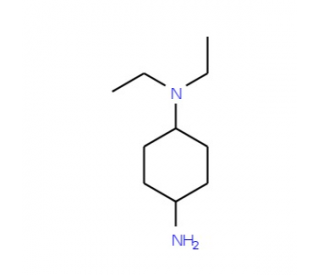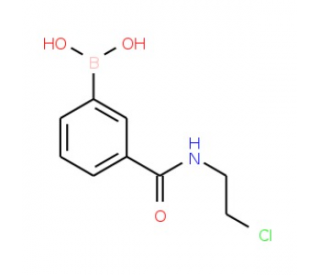详细说明
Species Reactivity
Human
Specificity
Detects human Ki-67/MKI67 in directs ELISAS.
Source
Recombinant Monoclonal Rabbit IgG Clone # 1297A
Purification
Protein A or G purified from cell culture supernatant
Immunogen
Human Ki-67/MKI67 synthetic peptide
Accession # P46013Formulation
Lyophilized from a 0.2 μm filtered solution in PBS with Trehalose. *Small pack size (SP) is supplied as a 0.2 µm filtered solution in PBS.
Label
Unconjugated
Applications
Recommended
ConcentrationSample
Immunohistochemistry
3-25 µg/mL
See below
Immunocytochemistry
0.3-25 µg/mL
See below
Intracellular Staining by Flow Cytometry
0.25 µg/10 6 cells
See below
Knockout Validated
Ki-67/MKI67 is specifically detected in Hela human cervical epithelial carcinoma parental cell line but is not detectable in Ki-67/MKI67 knockout HeLa cell line.
Please Note: Optimal dilutions should be determined by each laboratory for each application. are available in the Technical Information section on our website.
Data Examples
Immunocytochemistry | Ki-67/MKI67 in HeLa Human Cell Line. Ki-67/MKI67 was detected in immersion fixed HeLa human cervical epithelial carcinoma cell line using Rabbit Anti-Human Ki-67/ MKI67 Monoclonal Antibody (Catalog # MAB7617) at 0.3 µg/mL for 3 hours at room temperature. Cells were stained using the NorthernLights™ 557-conjugated Anti-Rabbit IgG Secondary Antibody (red; Catalog # ) and counterstained with DAPI (blue). Specific staining was localized to nuclei. View our protocol for . |
Intracellular Staining by Flow Cytometry | Detection of Ki-67/MKI67 in Human PBMCs by Flow Cytometry. Human peripheral blood mononuclear cells (PBMCs) either (A) untreated or (B) treated with 5 μg/mL PHA for 5 days were stained with Rabbit Anti-Human Ki-67/MKI67 Monoclonal Antibody (Catalog # MAB7617) followed by Phycoerythrin-conjugated Anti-Rabbit IgG Secondary Antibody (Catalog # ) and Mouse Anti-Human CD3 epsilon APC‑conjugated Monoclonal Antibody (Catalog # ). Quadrant markers were set based on control antibody staining (Catalog # ). To facilitate intracellular staining, cells were fixed and permeabilized with FlowX FoxP3 Fixation & Permeabilization Buffer Kit (Catalog # ). View our protocol for . |
Immunohistochemistry | Ki-67/MKI67 in Human Pancreatic Cancer Tissue. Ki-67/MKI67 was detected in immersion fixed paraffin-embedded sections of human pancreatic cancer tissue using Rabbit Anti-Human Ki-67/MKI67 Monoclonal Antibody (Catalog # MAB7617) at 3 µg/mL for 1 hour at room temperature followed by incubation with the Anti-Rabbit IgG VisUCyte™ HRP Polymer Antibody (Catalog # ). Tissue was stained using DAB (brown) and counterstained with hematoxylin (blue). Specific staining was localized to nuclei. View our protocol for . |
Knockout Validated | Ki-67/MKI67 Specificity is Shown by Immunocytochemistry in Knockout Cell Line. Ki-67/MKI67 was detected in immersion fixed HeLa human cervical epithelial carcinoma cell line but is not detected in Ki-67/MKI67 knockout (KO) HeLa cell line using Rabbit Anti-Human Ki-67/MKI67 Monoclonal Antibody (Catalog # MAB7617) at 1 µg/mL for 3 hours at room temperature. Cells were stained using the NorthernLights™ 557-conjugated Anti-Rabbit IgG Secondary Antibody (red; Catalog # ) and counterstained with DAPI (blue). Specific staining was localized to nuclei. View our protocol for . |
Preparation and Storage
Reconstitution
Reconstitute at 0.5 mg/mL in sterile PBS.
Shipping
The product is shipped at ambient temperature. Upon receipt, store it immediately at the temperature recommended below. *Small pack size (SP) is shipped with polar packs. Upon receipt, store it immediately at -20 to -70 °C
Stability & Storage
Use a manual defrost freezer and avoid repeated freeze-thaw cycles.
12 months from date of receipt, -20 to -70 °C as supplied.
1 month, 2 to 8 °C under sterile conditions after reconstitution.
6 months, -20 to -70 °C under sterile conditions after reconstitution.
Background: Ki-67/MKI67
MKI67 (also Ki-67) is a 350-400 kDa nuclear protein that belongs to a molecular group comprised of mitotic chromosome-associated proteins. Ki-67 was originally recognized as an antigen associated with the monoclonal Ki-67 antibody raised against Hodgkin's lymphoma nuclear material. Ki-67 is contextually expressed, being potentially found in all cells that are not in the Go phase of the cell cycle. Thus, MKI67 qualifies as a cell proliferation marker. Functionally, Ki-67 is known to interact with 160 kDa Hklp2, a protein that promotes centrosome separation and spindle bipolarity. It also directly interacts with NIFK, and apparently binds to UBF, thus playing a role in rRNA synthesis. Human MKI67 is 3256 amino acids (aa) in length. It contains one FHA domain (aa 8-98), followed by at least 24 utilized Ser/Thr phosphorylation sites and sixteen 120 aa repeats (aa 1000-2928) that are interspersed with at least 90 additional utilized phosphorylation sites. There are two potential isoform variants. One isoform is 315-345 kDa in size and shows a deletion of aa 136-495, while a second isoform contains a 58 aa substitution for aa 1-513. Over aa 3120-3256, human Ki-67 shares 46% aa sequence identity with the mouse ortholog to Ki-67.
Long Name:
Antigen Identified by Monoclonal Antibody Ki-67
Entrez Gene IDs:
4288 (Human); 17345 (Mouse); 291234 (Rat)
Alternate Names:
antigen identified by monoclonal Ki-67; antigen KI-67; Ki67; Ki-67; KIA; Marker Of Proliferation Ki-67; MIB-1; MKI67; PPP1R105; proliferation-related Ki-67 antigen; Protein Phosphatase 1; Regulatory Subunit 105; TSG126











 粤公网安备44196802000105号
粤公网安备44196802000105号